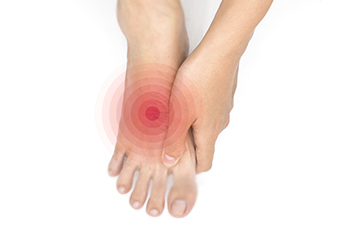
Ankle pain is most commonly caused by a sprained ligament or strained tendon in the complex ankle joint. However, in many cases it actually may be a sign that you have fractured an ankle bone. Signs of a fractured, or broken, ankle can include pain, an inability to bear weight, and swelling. If a bone is protruding from the skin, it is important to get immediate medical attention. To determine if the ankle pain is from a sprain or a fracture, a podiatrist will order an X-ray to be taken. If a bone is simply misaligned, this type of doctor may put it back in place. Anesthesia and pain medication is likely to be administered. In severe cases, surgery may be required, and plates, screws and wires may be used to keep the bones together. The ankle is generally placed in a cast, and recovery may take up to three months, depending on the severity of the fracture. If you believe you have a fractured ankle, it is suggested that you see a podiatrist for a diagnosis as quickly as possible.
Broken ankles need immediate treatment. If you are seeking treatment, contact one of our podiatrists from Advanced Foot & Ankle Medical Center . Our doctors can provide the care you need to keep you pain-free and on your feet.
Broken Ankles
A broken ankle is experienced when a person fractures their tibia or fibula in the lower leg and ankle area. Both of these bones are attached at the bottom of the leg and combine to form what we know to be our ankle.
When a physician is referring to a break of the ankle, he or she is usually referring to a break in the area where the tibia and fibula are joined to create our ankle joint. Ankles are more prone to fractures because the ankle is an area that suffers a lot of pressure and stress. There are some obvious signs when a person experiences a fractured ankle, and the following symptoms may be present.
Symptoms of a Fractured Ankle
- Excessive pain when the area is touched or when any pressure is placed on the ankle
- Swelling around the area
- Bruising of the area
- Area appears to be deformed
If you suspect an ankle fracture, it is recommended to seek treatment as soon as possible. The sooner you have your podiatrist diagnose the fracture, the quicker you’ll be on the way towards recovery.
If you have any questions, please feel free to contact our office located in Thousand Oaks, CA . We offer the newest diagnostic and treatment technologies for all your foot care needs.




